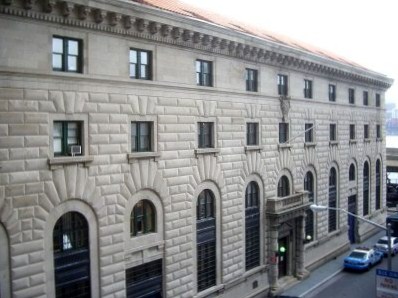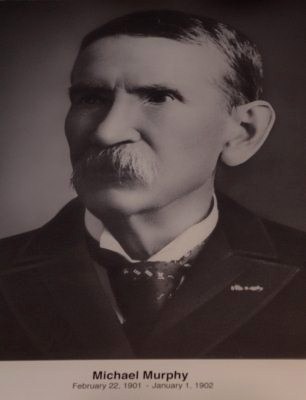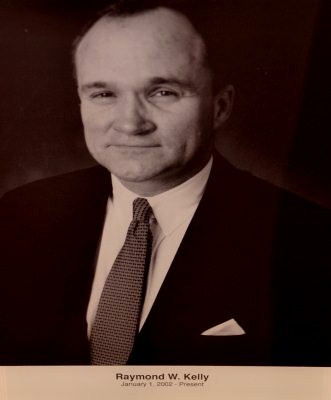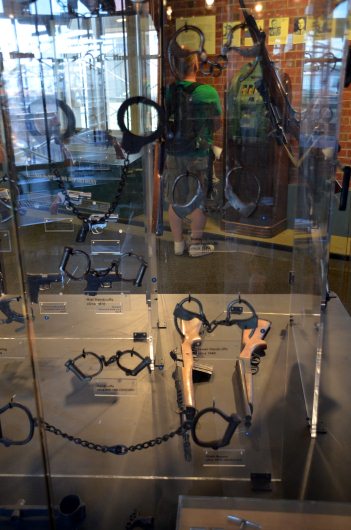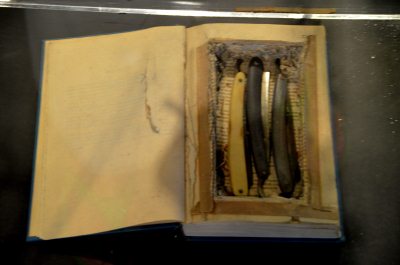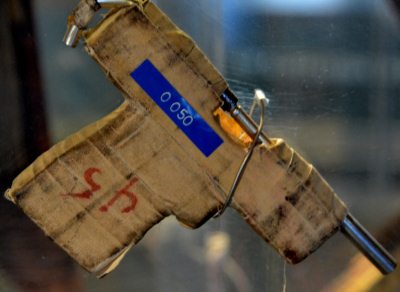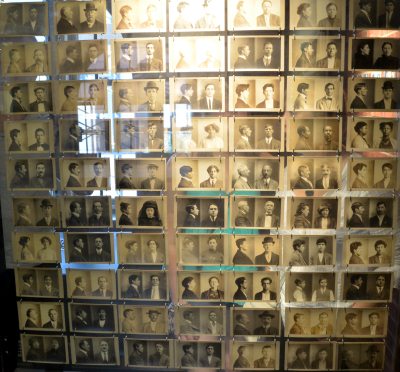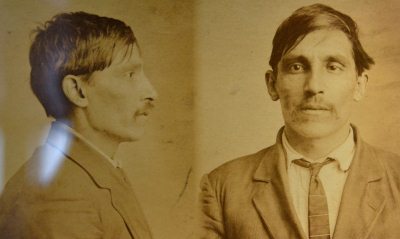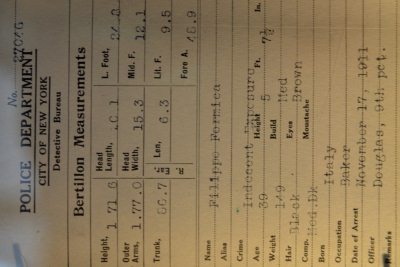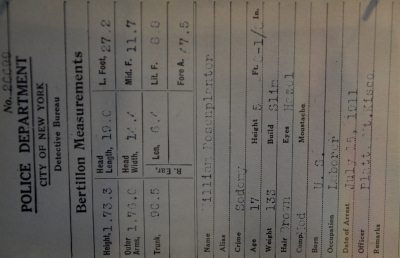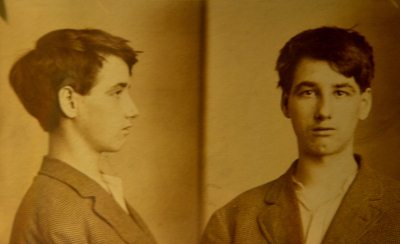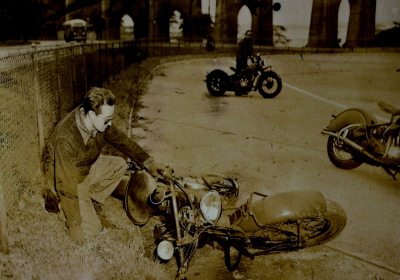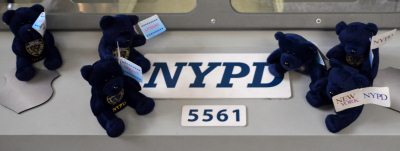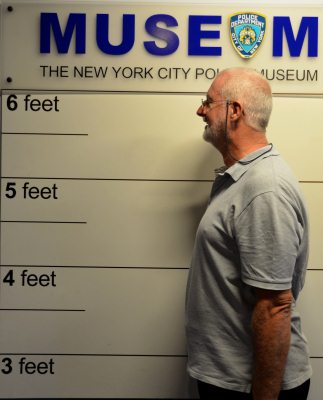NY Police Museum

|
The New York City Police
Museum
The NYCPM celebrates the history and contributions of the New York City Police Department since its establishment in 1845. Located in Lower Manhattan, near Wall Street and the South Street Seaport, the museum contains a wide range of information on the history of the NYPD. The museum, which grew from a gallery housed at the police academy, opened at 26 Broadway at Bowling Green in January 2000. In January 2002, the museum re-opened in a new location on Old Slip, closer to South Street Seaport. The new premises, appropriately, were the First Precinct Building, designed by the partnership of Richard Howland Hunt and Joseph Howland Hunt and built in 1909-11. The landmarked building was a model precinct house in its time. From 1884 to 1973 this Florentine Renaissance palazzo with its bold rusticated facades was the home of what one historian called "the most important police precinct in the world." That precinct closed due to a corruption scandal in 1977, and museum officials saw a move to this location as an opportunity to connect with the Department's history. Construction and renovation of the new space cost more than $4 million and exhibition space grew by nearly 45%. Its new exhibits included a 1972 Plymouth Fury, a model of a jail cell, a timeline of transportation, lock-picking tools belonging to Willie Sutton, a moving exhibit on 9-11 that occupies half the museum's third floor (own blog), the other half is the Hall of Heroes that includes the name and badge of every NYPD officer killed in the line of duty, starting with David Martin on the 6th of August 1861.

All the Police Commanders from the first - Michael Murphy to the present - Raymond Kelly, who took over just four months after 9/11
Bits of History: The familiar eight-point hats were introduced in the early 1930's and replaced hats with circular crowns. The new design had historical significance. The eight points commemorated the eight-member Rattle Watch, the first officially recognised police force on Manhattan Island. The Rattle Watch was hired in the 1600's by the Dutch to patrol New Amsterdam. They carried no weapons, so unlike some of their successors, could not rap nightsticks on curbstones to summon help. Instead, when one of the force needed assistance, he would swing a large wooden rattle through the air.
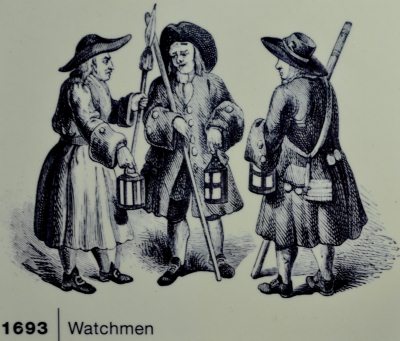  Rules of
the Rattle Watch. 1610-1664 1.
Watchmen to be on duty before bell-ringing, under penalty of six
stivers. 2.
Whoever stays away without sending a substitute, to be fined two
guilders. 3.
One guilder fine for drunkenness.. 4. Ten
stivers fine for sleeping on the post. 5.
If any arms are stolen through negligence of the watch, the watchman
will have to pay for the arms and be
fined one guilder for the first, two guilders for the second, and the fine for
the third offence to be discretionary with the court. 6.
A fine of two guilders for going away from the watch, and one guilder
for missing turn. 7. The watch is to call the hour at all corners from 9am until reveille, for which they received an additional compensation of eighteen guilders per month.
Confiscated Weapons
The New York City Police Department was established in 1844. At the time, New York City's population of 320,000 was served by an archaic force, consisting of one night watch, one hundred city marshals, thirty-one constables and 51 municipal police officers. Those first policemen had no uniforms; officers simply wore shiny metal badges on their own clothes to identify them as part of the force. According to the museum, the badges were made of stamped copper, so the public began calling them "coppers" and in time "cops". Some police officers in the 1870's; preferred to be assigned to the seedier midtown neighbourhood running from 24th to 42nd streets, between Fifth and Seventh Avenues. They nicknamed it the area "Tenderloin", because the kickbacks they received there paid them enough to afford steak for dinner.
 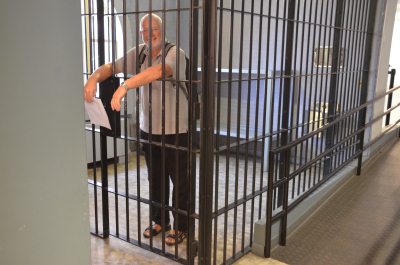
This large camera was used to take “stand up” mug shots. Bear...........................
The Bertillion System. Developed by Alphonse Bertillion in Paris, Bertillion cards featured face and profile photographs of the suspect on the front of each card. On the back were recorded a series of measurements unique to each individual and information such as identifying scars and occupation. Bertillion’s system was used in Europe by 1888 and was adopted by the NYPD in 1897. Hundreds of thousands of “Mug Shots” cards were produced between 1897 and 1902 making the system not only cumbersome but also time consuming – often unreliable. The Bertillion measurement system for identification was replaced by finger printing identification in 1903.
Around the turn of the century, the NYPD began to professionalise under leadership of then Police Commissioner, Theodore Roosevelt. With new innovations in both science and technology, the police force were able to establish new units, such as the Bomb Squad in 1905, Motorcycle Squad in 1911, Automobile Squad in 1919, Emergency Service Unit in 1926, Aviation Unit in 1929 as well as the Radio Motor Patrol (RMP) in 1932. The department was also among the earliest to implement fingerprinting techniques and mug shots. In 1896 Commissioner Roosevelt authorized the purchase of a standard issued revolver for the NYPD. It was the Colt New Police Revolver in .32 Long Colt caliber. He also instituted required firearms training including pistol practice and qualification for officers.
 
NYPD Women: In 1845 the New York City Police Department hired its first female jail matrons. Legislation was enacted to appoint female police matrons in 1888, and the first four were hired in 1891. In 1895 the first woman to work at Police Headquarters, Minnie Gertrude Kelly, was appointed Secretary to the Police Board. In 1912 Isabella Goodwin was appointed as the first female first grade detective. In 1917 two unknown women were assigned special patrolwomen's badges. In 1918 the first female Deputy Commissioner, Ellen O'Grady, was appointed, and in August of that year the first group of policewomen in the NYPD were appointed (there were six). In 1919 the title "policewoman" was changed to "patrolwoman." In 1921 the Women's Police Precinct was formed with 20 patrolwomen assigned; Mary Hamilton was assigned as director. In 1924 the New York Police Department's Women Bureau was created. Also in 1924, Mary Bembry became the first women shot in the line of duty. In 1934 female officers began to have pistol practice with male officers. In 1938 the first civil service exam for the title "Policewoman" was given. About 5,000 women took the exam, with 300 passing it. In 1942, there began a requirement of a college degree for female officers. In 1958, women and men began to train together at the Police Academy. In 1961, Felicia Shpritzer of the NYPD sued to allow women the right to take the sergeant's exam. As a result of this lawsuit, 126 policewomen took the Sergeant's exam for the first time in 1964. Spritzer and another policewoman, Gertrude Schimmel, became the first female sergeants and after suing again, the duo became the first female lieutenants in 1967. Schimmel went on to become the first female police captain in 1971 and the first female deputy inspector in 1972.
 
The Bomb Squad was created in 1903 and led by Lt. Giuseppe Petrosino, was called the Italian Squad, then the bombs were sticks of dynamite, nowadays the unit may operate from humble offices but they are highly trained experts with robocop to help.
Alec Hoag was a New York City thief and con-man who pulled off countless scams thanks to a pair of police officers who provided protection in exchange for a piece of pie. However, when Hoag tried to cheat the officers out of their share of the loot, they turned around and beat him at his own game - and "Smart Alec" (as they sarcastically called him) ended up in jail. Eventually the name became a generic term for an obnoxious know-it-all.
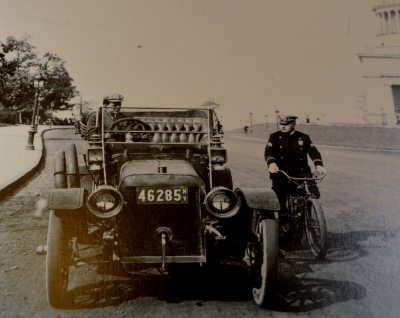  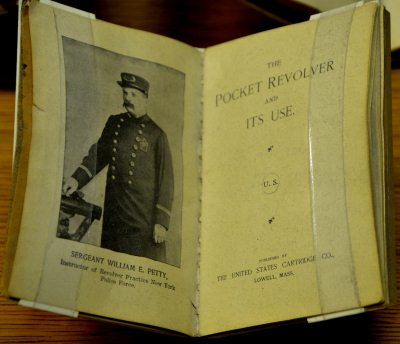 
In the early 1970's, the 41st Precinct police station in the Bronx earned its nickname. One chaotic evening a local resident used a bow and arrow to kill a wig-stealing intruder. The station ended up with crowds of protesters questioning the validity of the mans arrest. The arrow with the attached wig ended up on Lloyd Gittens - the desk lieutenants desk; he glanced up at the scalp-like evidence and referred to his precinct as Fort Apache and the name stuck.

The funeral of Officer Edwin Fogel – NYPD Highway 1 - in
1979. Trainee Raymond Reddy escapes injury after
wrecking his bike at Randall’s Island training facility. Work in the Motorcycle Squad and Highway Patrol over the decades has often been dangerous and many officers have been injured or narrowly faced injury. Some have made the ultimate sacrifice. 39 year old Edwin Fogel (HWY 1) had been cited for bravery four times in his sixteen year career before he was tragically gunned down in upper Manhattan while attempting to apprehend a suspect. Dwight Yee was the first Asian American to be hired in highway Patrol, in 1983; Rodney Chin was the second in 1990.
Rodney Chin HWY 2 (left), and Dwight Yee HWY 1
The NYPD Counter-Terrorism Bureau was founded in 2002 as a result of the 9/11 tragedy and the threats to attack the city that followed. Budget cuts may have reduced the NYPD by 4,000 officers in the last decade, but of the 210 cities with a population in excess of 100,000; New York City ranked 194th, (with number one being the worst for crime). We have certainly felt very safe in the city, largely put down to Mayor Rudolph Giuliani's tough crack down on gangs and a much more visible force toting arms. The reduction in police officers has been in some way offset by the setting up of very specialist units; we watched a film showing a billion dollar investment into a unit targeted at tracking terrorists through the internet, a team of NYPD detectives in Israel, an in-house intelligence unit and several other initiatives at street level.
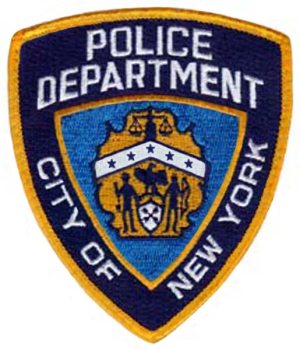 
The badge adopted in 1971 and the NYPD flag.
In June 2004, there were about 40,000 sworn officers plus several thousand support staff; In June 2005, that number dropped to 35,000. As of November 2007, it had increased to slightly over 36,000 with the graduation of several classes from the New York City Police Academy. The NYPD's current authorized uniformed strength is 37,838. There are also approximately 4,500 Auxiliary Police Officers, 5,000 School Safety Agents, 2,300 Traffic Enforcement Agents, and 370 Traffic Enforcement Supervisors currently employed by the department.
NYPD Beanies for all five grandsons and one for grandma - mine called Bobby - not for the obvious English reason, but after the NYPD Detective played by Vincent D'Onofrio's character Bobby Goren .
Manhattan’s Most Wanted - Big Bear “Dodgy Knee” Millard, his accomplice and wife Pepe “Mama“ Millard.
ALL IN ALL I LOVED IT
UNEXPECTEDLY REALLY
INTERESTING |
